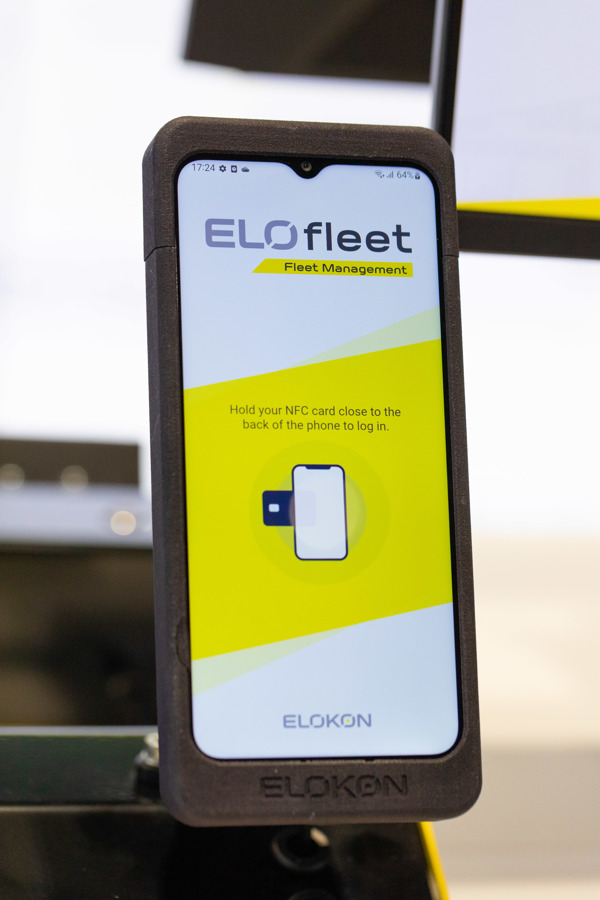
For over 25 years, fleet management systems have revolutionized the world of forklifts, transforming them from mere machines into strategic assets for businesses. Today, these systems are recognized as the gold standard in material handling technology, offering a multitude of benefits that enhance every aspect of operations.
Forklift fleet management systems have achieved wide international success due to their high added value in:
- Increasing employee and operational safety.
- Reducing damage to lift trucks, pallet racks, and plant equipment.
- Improving material handling productivity.
ELOKON has over 20 years of experience in engineering, installing, and servicing a broad range of fleet management solutions for forklift fleets. Their flagship product ELOfleet is an advanced, wireless, smartphone-based solution that offers access control, safety checklists, sophisticated impact sensing, vehicle productivity data, and cloud-based software.
Of course, the priority of functions can vary from user to user. In the following we will discuss three of them in particular: access control, safety checklists, and impact recording.
The Importance of Access Control
Proper access control is paramount in maintaining a safe and efficient working environment. When unauthorized, untrained individuals operate heavy machinery, the risk of accidents increases significantly. Such mishaps can result in damaged equipment, delayed operations, and in the worst cases, causing injuries or even fatalities.
Aside from the human cost, businesses may suffer financial implications due to equipment damage, production delays, liability claims, and insurance premium hikes. As such, ensuring only trained personnel operate your forklifts is not just about safety; it’s also about protecting your bottom line. Let’s take a look at how unauthorized forklift access can play out.
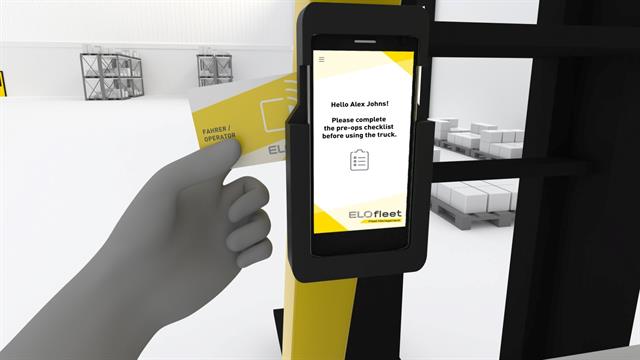
Let’s say an untrained temporary worker at a manufacturing plant was given access to operate a forklift and ended up causing a significant accident. The forklift collided with a storage rack, causing a cascade of heavy boxes that resulted in considerable property damage and, unfortunately, severe injury to a fellow worker.
How about a large-scale packaging facility dealing with considerable operational delays after an unauthorized operator used a forklift, damaging a critical piece of equipment? The damage required extensive repair, incurring unforeseen costs and halting production lines for days.
Finally, consider a warehouse facing substantial liability claims and a spike in insurance premiums after a contractor, without the proper training, caused an accident with a forklift. It not only led to a significant financial setback but also tarnished the company's reputation, affecting its business relations and employee morale.
Unfortunately, these examples are not uncommon and serve as stark reminders that preventing untrained personnel from operating your forklifts isn't just about protecting people but also your organization. These risks highlight the necessity of implementing strict access control measures, which can be effectively managed using a robust forklift management system.
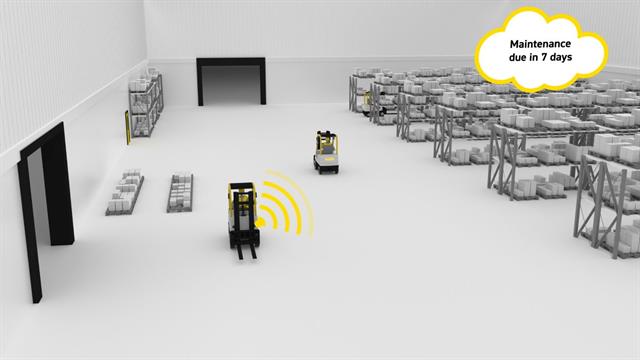
Forklift access control technology can take several forms. The most rudimentary form, which we do not recommend, involves logging in to a forklift by entering a simple PIN code on a keypad. The main problem with this method is that PINs are easily shared, which undermines the effectiveness of access control.
The most effective (and most common) form of forklift access control requires scanning a unique RFID card/fob, or a near-field communication (NFC) chip, on a vehicle-mounted reader. Ideally, the forklift fleet management system will work with your existing employee ID badges, so you don’t have to buy (and your drivers don’t need to carry) an extra ID token. Be sure to check if your prospective system vendor offers a system that is compatible with your employee badges.
Driver anonymity is also an important issue for many users. If your local workforce or labor laws prevent you from identifying forklift drivers individually, make sure you implement a fleet management system that can operate effectively without recording or evaluating drivers’ personal performance data.
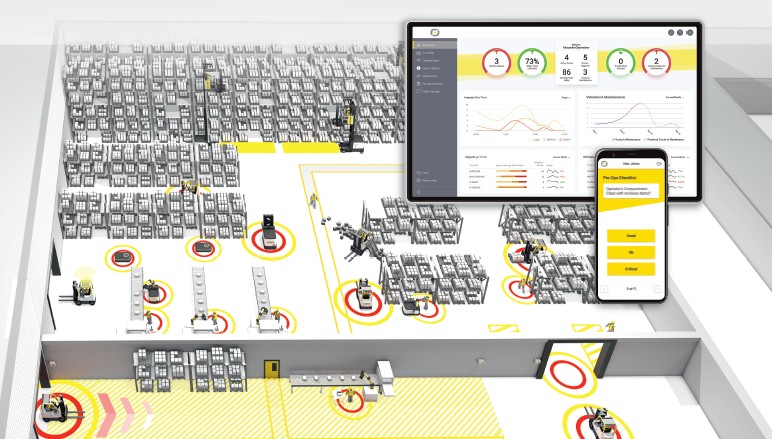
Electronic safety checklists via Smartphone

To ensure that equipment is safe to use, operators must perform a safety inspection and complete an electronic safety (pre-op) checklist. ELOfleet enables you to configure the checklist questions and answers to meet the specific needs of the forklifts in your operation. For example, electric and internal combustion forklifts need different safety checks to be performed. In addition, the system randomizes the answers so that operators can’t “pencil whip” the electronic pre-op checklist. ELOfleet makes it easy to set up and deliver these electronic checklists through its smartphone app. Operators answer a series of multiple-choice questions to confirm the truck is safe to operate. If problems are reported, the system can notify maintenance – in real time – and, if necessary, lock out the vehicle.
ELOfleet records and stores the operator’s name or ID number, the forklift ID, the date, and time that the checklist was completed, and any safety issues with the equipment. This information enables management to ensure compliance with safety regulations and generate reports quickly and easily (as required by OSHA in the USA).
As a best practice, most organizations require all operators to complete a safety (pre-op) checklist before they use a forklift. This procedure lets an operator know if the equipment was damaged by a previous operator, needs routine maintenance, or is safe to use.
Avoid unnecessary costs - Impact recording and reporting
Impact sensing is often called “crash” or “shock” detection. This function utilizes an accelerometer that records when a vehicle experiences unusual deceleration or acceleration such as a sudden stop or such as being hit by another vehicle. Often, though not always, a detected impact indicates a forklift collision with another vehicle or with facility infrastructure, such as pallet racking.
ELOfleet can be configured individually and fine-tuned wirelessly, according to vehicle type and ground conditions. It allows you to define different “damage profiles" for different vehicles in a variety of environments.
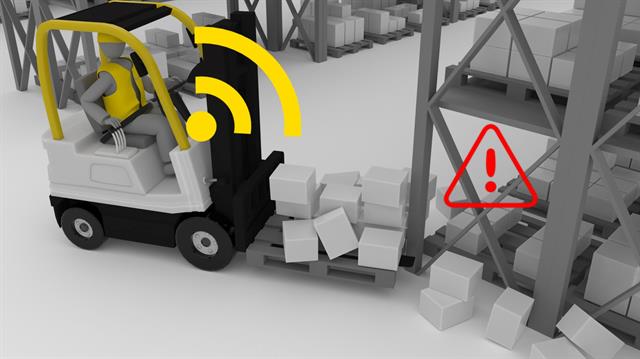
For large fleets it is important that, after you configure the impact sensing parameters on one vehicle, you can wirelessly upload the same settings to all vehicles that need the same configuration.
You should avoid any forklift fleet management system that requires physically touching vehicles to configure their impact sensors. Without wireless, over-the-air (OTA) capability, the task of adjusting impact settings will be so difficult, it will make the sensors effectively useless.
ELOfleet can categorize impact events as “light,” “moderate,” or “severe.” This capability is very important; it allows you to define how the system responds to the different impact categories. For example, a “light” impact might only appear on a weekly report, but the vehicle continues to work uninterrupted. A “severe” impact could automatically switch the vehicle to “creep” speed and, at the same time, alert a manager or maintenance supervisor wirelessly in real time. You could also require the manager to inspect the vehicle and either release it back to normal use or lock it out for repair.
We know from experience that an impact recorded as “severe” does not necessarily indicate an accident or damage. Sometimes floor gaps, potholes, railroad tracks, or even how a lift truck is loaded can trigger such an impact event. In that case, it is important to allow a driver to release the vehicle from “creep” mode and continue working, to maintain productivity and avoid unnecessary downtime. To manage this situation most effectively ELOfleet triggers a “damage review” checklist that makes the driver acknowledge the impact and confirm if the event was an accident with damage, or not. This feature is very important for driver acceptance.
The Bottom Line
A forklift management system can be a game-changer in managing your fleet.
The forklift's integrated telematics system observes how the vehicle is used and records any risky driving practices such as speeding. This feature offers immediate information on the forklift's operational condition and helps promote adherence to safety standards, thereby decreasing the chances of accidents resulting from carelessness or failure to comply with safety regulations. By utilizing this data, management can effectively enforce safety protocols, leading to a significant decrease in the frequency of accidents caused by negligence or non-compliance with safety regulations.
Companies can also significantly enhance their productivity by integrating a forklift management system. The system provides real-time data about each forklift's operational status, such as battery life and ongoing maintenance needs. These systems also monitor equipment usage and detect potential mechanical issues before they result in breakdowns.
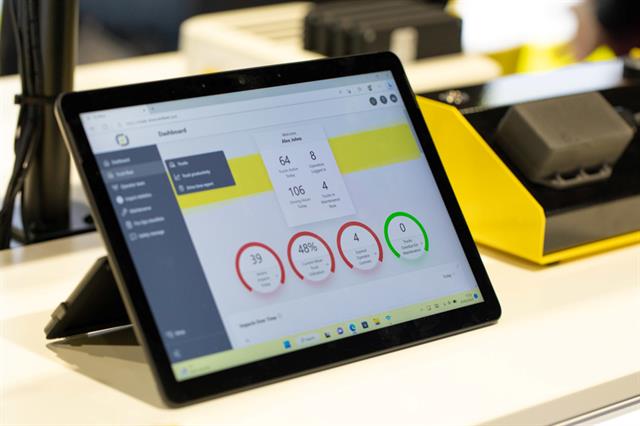
Addressing the Challenge with ELOfleet
In the world of forklift fleet management systems, ELOfleet stands out. It enhances safety by ensuring that only trained and authorized personnel can operate forklifts. Leveraging advanced technology, ELOfleet enables a seamless, efficient operation that minimizes downtime, optimizes resources, and ensures compliance with safety standards.
ELOfleet is designed to help you transition toward intelligent, safe, and productive warehouse operations. It’s not just about access control or pre-op checklists; it’s about taking a holistic approach to forklift management that factors in all aspects of safety, efficiency, and productivity.
Ready to transform your forklift fleet management? Dive deeper into the world of innovation with our comprehensive e-book. Download it now on www.elofleet.elokon.com and revolutionize your warehouse operations.
Contact us to learn more about how ELOKON’s forklift safety and fleet management systems can help your warehouse operations.
